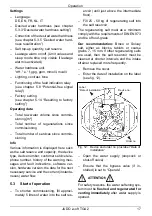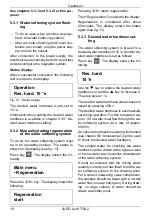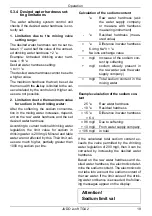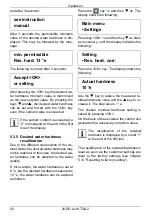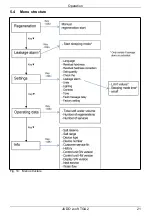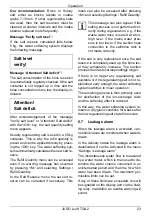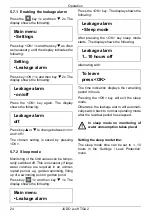
JUDO i-soft TGA 2
9
Product information
3
Product information
3.1
Application
The water softening system is suitable for use
with cold drinking water having a maximum
water temperature of up to 30 °C.
ATTENTION
(see chapter 1.2 “Safety instructions and
dangers due to non-observation”)
Usage limitations see chapter 2 “Intended
use”.
This water softening system is for protection
of water pipes and the water heater against
limescale deposits.
With partially softened water, devices and fit-
tings are preserved and the consumption of
washing and cleaning agents reduced.
3.2
Approval marks
The devices comply with the technical regu-
lations for drinking water installation accord-
ing to DIN EN 806 ff. and the national sup-
plement DIN 1988 ff. as well as DIN
EN 1717. They have been tested and ap-
proved by the DVGW (German Technical
and Scientific Association for Gas and Wa-
ter) according to the requirements of DIN
EN 14743 and DIN 19636-100 for water sof-
tening systems (cation exchangers) and can
thus bear the DIN-DVGW mark.
3.3
Materials used
The materials used are resistant to the phys-
ical, chemical and corrosive loads expected
to be encountered in drinking water and fulfil
the specifications required by DIN
EN 14743 and DIN 19636-100 (“Water sof-
tening systems (cation exchangers) in drink-
ing water installations”). All materials are hy-
gienically and physiologically harmless.
Plastics fulfil the KTW Guideline (Guideline
for the Hygienic Assessment of Organic Ma-
terials in Contact with Drinking water) of the
German Federal Environmental Agency
(UBA). Metallic materials fulfil the require-
ments of DIN 50930-6 (Effect of metallic ma-
terials on the quality of drinking water).
4
Installation
4.1
General
ATTENTION
(see chapter 1.2 “Safety instructions and
dangers due to non-observation”)
Installation must only be performed by suit-
ably qualified technical personnel.
The chapter 2 “Intended use” must be ob-
served without fail!
The pipe must be able to safely support the
water softening system.
Otherwise mechanical damage to the pipe
up to and including breakage can result.
This can result in severe water damage.
Should such an event occur, persons in the
vicinity of the water softening system are ex-
posed to a risk of injury of harm because of
the large water volumes that could escape.
For this reason pipes must, where neces-
sary, be provided with additional fastenings
or support.
To ensure convenient operation and mainte-
nance always adhere to the specified di-
mensions and distances.
At least 300 mm clearance is required
above the water softening system, so that all
maintenance work can be properly per-
formed.
Limescale deposits block the water
supply and therefore can result in in-
creased energy consumption.
Fig. 3:
DIN-DVGW mark

















